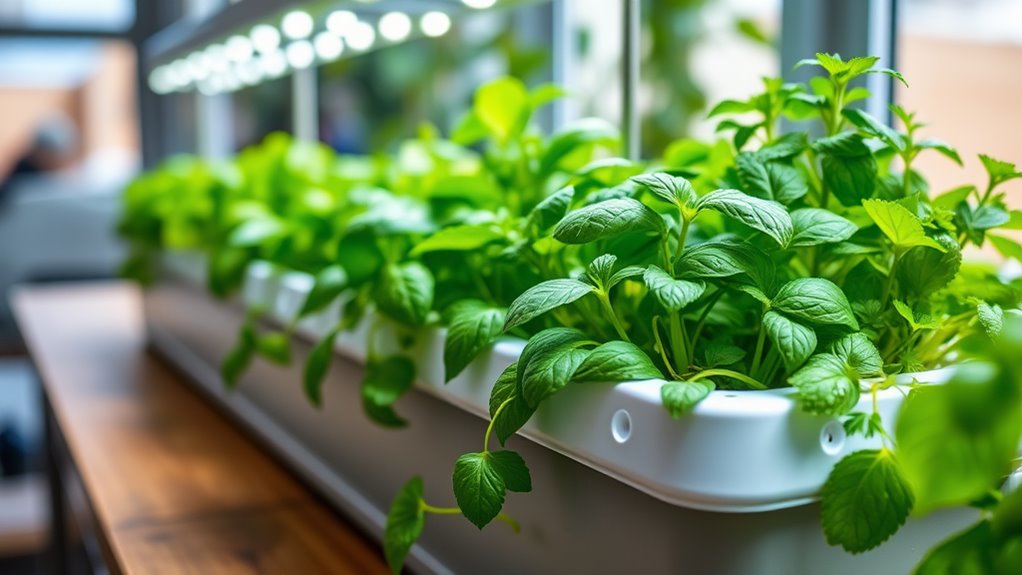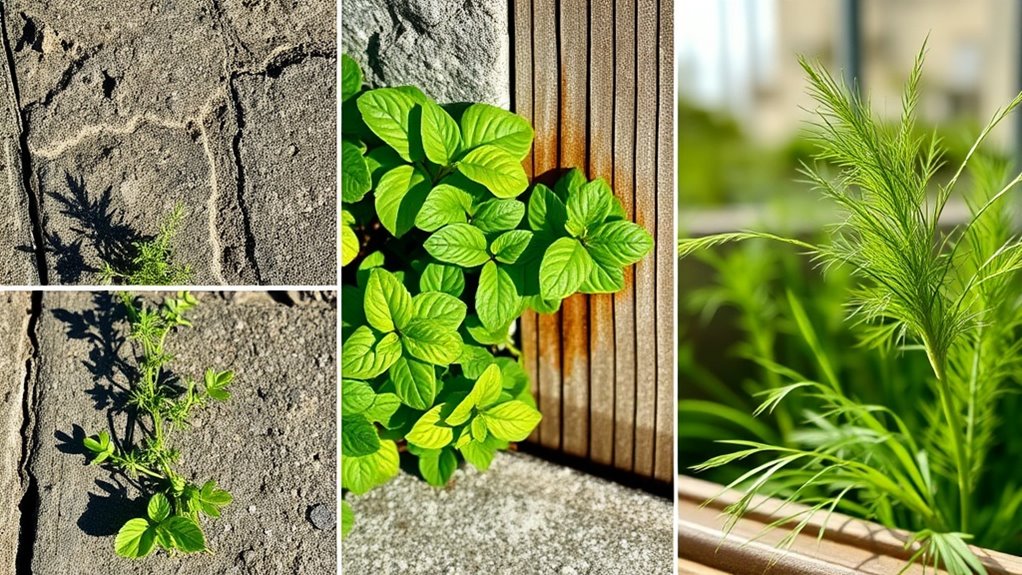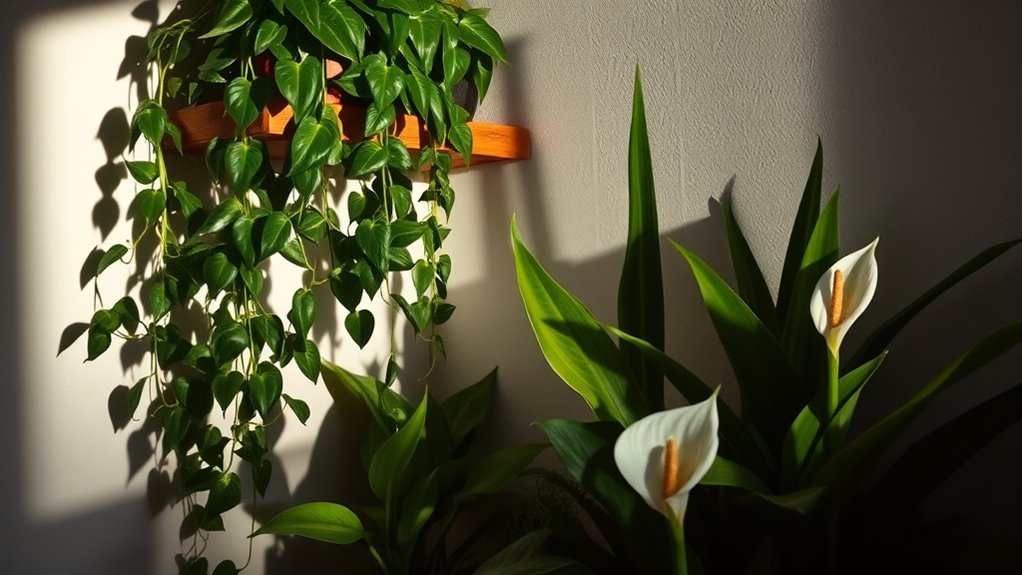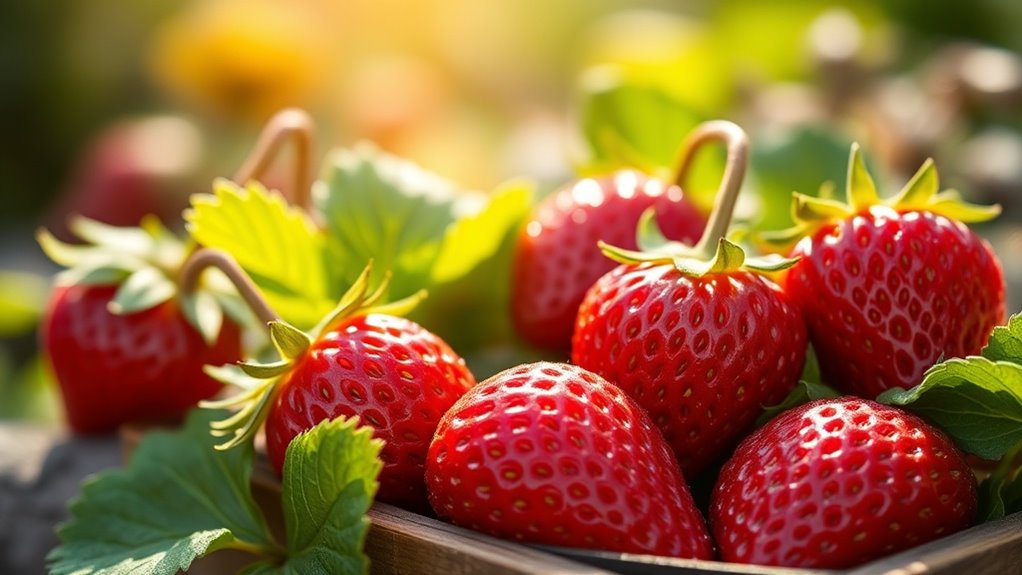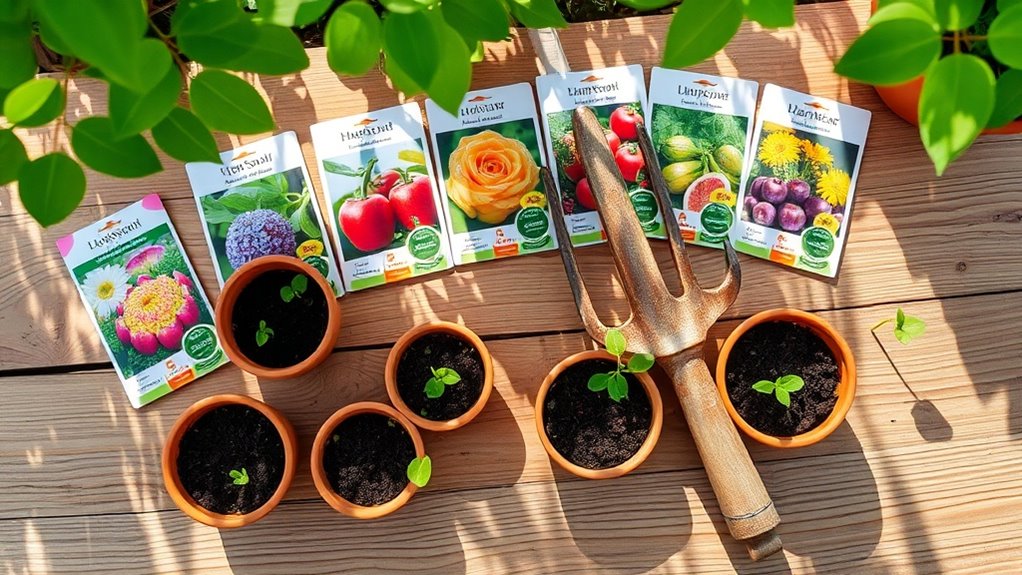How to Grow Fresh Herbs Without Sunlight
Did you know that many herbs can actually thrive in low-light conditions, making it possible to grow fresh herbs without direct sunlight? By selecting the right varieties and utilizing artificial grow lights, you can create a thriving indoor garden. Understanding hydroponics and maintaining optimal indoor conditions are also crucial. If you’re curious about how to effectively cultivate these herbs indoors, keep exploring the essential techniques and tips that can lead to a successful harvest.
Key Takeaways
- Select low-light herb varieties like parsley, mint, chives, and cilantro that thrive in reduced light conditions.
- Utilize LED grow lights positioned 12-24 inches above plants for optimal light exposure.
- Maintain a light schedule of 12-16 hours daily to support herb growth and vitality.
- Consider hydroponics to provide nutrient-rich water directly to the roots for efficient growth.
- Monitor humidity levels between 40-60% and temperature between 65-75°F to create a healthy environment for herbs.
Choosing the Right Herbs for Low-Light Conditions
When you’re looking to grow herbs without sunlight, which varieties thrive best in low-light conditions? Consider herbs like parsley, mint, and chives, as they adapt well to reduced light levels.
These herbs low light conditions can tolerate help maintain their flavor and growth.
Additionally, you might try cilantro, which can flourish even in shade, providing fresh leaves for culinary use. Remember to monitor moisture levels, as low-light conditions can affect water retention.
By selecting these hardy varieties, you’ll ensure a vibrant indoor herb garden, even in spaces with limited natural light. Growing herbs in low light can be a rewarding experience that brings fresh flavors to your kitchen. Happy planting!
Utilizing Artificial Grow Lights
While selecting low-light herbs is important, utilizing artificial grow lights can significantly enhance their growth and vitality. LED grow lights are particularly effective, offering a full spectrum of light while consuming less energy. Position your lights 12-24 inches above the plants and keep them on for 12-16 hours daily for optimal growth. Adjust the height as your herbs grow. Fluorescent bulbs can also work, but they emit more heat, so monitor the temperature closely. Ensure your grow lights mimic natural sunlight, focusing on blue light for vegetative growth and red light during flowering to encourage robust, healthy plants. Additionally, proper light exposure is crucial for maximizing herb yield and flavor.
Hydroponics: A Soil-Free Solution
Hydroponics provides an innovative, soil-free method for growing fresh herbs indoors, allowing you to maximize space and control over growing conditions.
With this technique, you’ll use nutrient-rich water solutions to nourish your plants, making it ideal for indoor environments. Hydroponics can support a variety of leafy greens that thrive in these conditions.
Here are three key benefits of hydroponics:
- Faster Growth: Plants receive direct access to nutrients, speeding up their growth cycle.
- Space Efficiency: Hydroponic systems can be vertically stacked, saving valuable floor space.
- Reduced Pests: Without soil, you minimize the risk of soil-borne pests and diseases, leading to healthier plants.
Embrace hydroponics for thriving indoor herb gardens!
Indoor Gardening Techniques
Indoor gardening techniques offer a variety of methods to cultivate herbs and plants without relying on natural sunlight.
You can utilize grow lights, specifically LED or fluorescent, to provide the necessary spectrum for photosynthesis.
Consider using hydroponic systems, which deliver nutrients directly to plant roots while conserving space.
Vertical gardening is another effective approach, maximizing your area by stacking plants.
Additionally, you might explore aquaponics, combining fish farming with plant cultivation to create a symbiotic environment.
Finally, ensure proper drainage and select suitable containers to maintain healthy root systems, optimizing your indoor herb garden’s overall growth potential. Moreover, understanding light requirements can significantly enhance the success of your indoor herb gardening efforts.
Maintaining Optimal Humidity and Temperature
To grow fresh herbs successfully, maintaining optimal humidity and temperature is vital.
Herbs thrive in specific conditions, and you’ll need to create an environment that meets their needs.
Follow these guidelines:
- Humidity Levels: Keep humidity between 40-60%. Use a humidifier or pebble tray with water to maintain moisture.
- Temperature Control: Aim for a stable temperature between 65-75°F (18-24°C). Avoid drafts or sudden temperature changes.
- Monitoring Tools: Invest in a hygrometer and thermometer to track humidity and temperature accurately. Additionally, consider that growing culinary herbs indoors can enhance both the flavor and aroma of your dishes.
Harvesting and Using Your Fresh Herbs
When it’s time to harvest your fresh herbs, use sharp scissors or pruning shears to cut the stems just above a leaf node, promoting healthy regrowth. Understanding the culinary uses for each herb can enhance your dishes, whether you’re adding basil to pasta or rosemary to roasted meats. Additionally, incorporating cut and come again greens into your garden can provide a steady supply of fresh flavors throughout the season.
Best Harvesting Techniques
Although you’ve nurtured your fresh herbs in a controlled environment, knowing the best harvesting techniques is crucial for maximizing their flavor and longevity.
Follow these techniques for optimal results:
-
Use Sharp Scissors: Cleanly cut stems just above a leaf node to promote regrowth and prevent damage.
-
Harvest in the Morning: Pick herbs in the morning when essential oils are most concentrated, enhancing flavor.
-
Limit Harvesting: Remove no more than one-third of the plant at a time to ensure healthy growth and prevent stress.
Culinary Uses for Herbs
Fresh herbs are a culinary powerhouse, elevating dishes with their vibrant flavors and aromatic qualities. You can use herbs like basil and oregano to enhance pasta sauces, while cilantro adds a fresh kick to salsas and tacos. Chives, with their mild onion flavor, work well in dressings and dips.
To maximize their potency, chop or bruise herbs just before use. Experiment with infusing oils or butters for a concentrated flavor burst.

